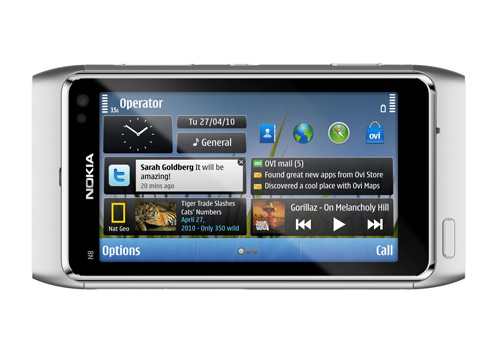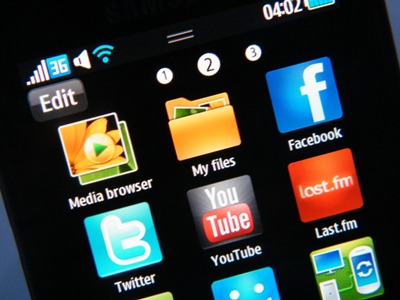Android 2.2 vs Windows Phone 7 vs iOS 4
Media
Windows Phone 7 lists all media in one place and offers great sound playback - many of the new handsets feature Dolby Mobile and SRS Surround Sound technology. The iPhone's media capabilities are well documented, but we reckon it does just enough to stay ahead of Windows Phone 7 here.
Internet
The iPhone's Safari browser still feels like the one to beat in terms of the mobile internet, but Android makes a good fist at this. Our first impressions of Windows Phone 7 haven't been that great in this area though - after all, you're still using Internet Explorer - but there is pinch-to-zoom navigation though it can't compete with iOS 4 here.
Email and communication
The iPhone's new unified inbox has been around on other handsets for a while and Windows Phone's People Hub brings social networking into the equation with shared contacts.
As on Android 2.2, there's integration with cloud services for contacts on Windows Phone 7. Contacts can be integrated with Google, Facebook or by Windows Live ID.
Sign up for breaking news, reviews, opinion, top tech deals, and more.
Windows Phone 7 will excel at business – Microsoft won't turn its back on its cash cows. But the iPhone wants to catch up. For the first time in iOS 4.0, you can configure more than one Exchange account on the iPhone – essential if you want to use a corporate account as well as using something like Google Sync. Android and Windows Phone 7 have no problems with this either.
Indeed, everything is so easy on Windows Phone 7 - even Exchange only needs a name and password in some cases and it can set up your corporate account.

Office 2010 is a big addition to Windows Phone 7 and OneNote is a key app here for taking meeting notes and other jottings. Everything feels good and large icons help the Office experience a great deal.

Exchange just looks beautiful on Windows Phone 7, with large, easy to hit icons and messages making things just very simple.
You can also touch the left hand side of the screen to activate little check boxes for deletion like the iPhone interface.
Apple is also talking up wireless app distribution for the iPhone, but it's supported in Windows Phone 7 already. Expect Microsoft to make it easy for business to migrate their handsets.
Who else?
And, of course, these three platforms won't always have it their own way. Symbian may be the world's most popular mobile operating system, but Series 60 remains a poor relation.
Symbian^3 is the first fully open source version of the Symbian platform and is available on the new Nokia N8, with improved graphics, HDMI support and far improved data performance - as well as multitasking. Symbian says it has worked on the user interface to make it far easier to use with "single tap" actions. However, in our review of the Nokia N8 we thought it felt like a well-optimised version of older handsets rather than the superphone reboot Nokia needs.

BlackBerry 6 is the latest operating system from RIM which offers many new features including universal search, full BlackBerry Messenger integration and a richer app experience.

And then there's Bada, Samsung's smartphone OS. While we're still not impressed with Samsung for launching yet another platform, we have used the OS on the Samsung Wave. The UI is pretty slick and works every bit as quick as an iPhone or Android-powered handset. However, Bada still has one problem - it can't multitask and isn't available on a many handsets yet. Samsung has announced the Samsung Wave II today, though.

- 1
- 2
Current page: OS showdown: Apps, email and alternatives
Prev Page OS showdown: Interface and personalisationDan (Twitter, Google+) is TechRadar's Former Deputy Editor and is now in charge at our sister site T3.com. Covering all things computing, internet and mobile he's a seasoned regular at major tech shows such as CES, IFA and Mobile World Congress. Dan has also been a tech expert for many outlets including BBC Radio 4, 5Live and the World Service, The Sun and ITV News.